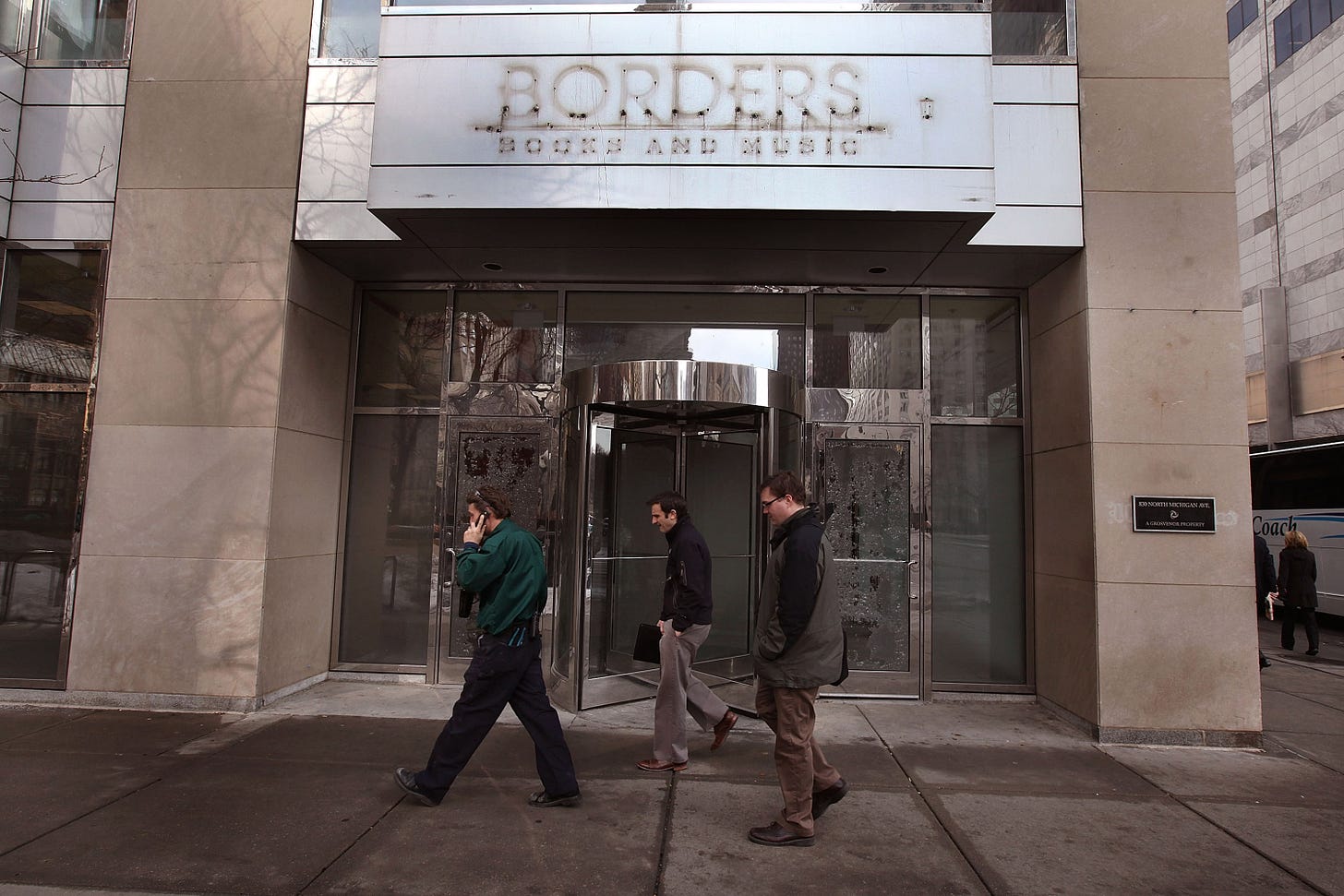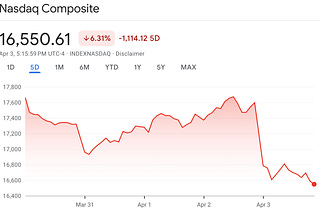
A Decade After Borders Shut Down, Here’s What’s in Its Former Locations
The defunct bookstore chain’s spaces are a tricky size to fill.

It’s been almost exactly ten years since the last Borders bookstore closed, following the company’s February 2011 bankruptcy. Vacating roughly five hundred locations throughout 2011, the erstwhile king of brick-and-mortar book retailing left behind a massive real-estate footprint, millions in unused gift cards, and a lot of memories. (And did you know “Borders” was the last name of two brothers who founded the chain, and not a reference to expanding the borders of your mind?)
It is hard to overstate, yet already difficult to remember, just how popular and big Borders was. More than Barnes & Noble, its similarly sized competitor, Borders was practically synonymous with bookstores during its height in the 1990s and early 2000s. In its heyday it was one of the finest and most successful examples of the category killer or “medium-box” store, a now-struggling retail concept that mixes discounting and large selection with curation and attention to quality.
Borders distinguished itself in a number of ways. Most of its stores boasted a café and comfortable interior, and later free wifi, which made them social, multi-use spaces: light breakfast spots, teen hangouts, places to read a story to the kids. The chain also included an unusual number of two-story locations, and many urban or downtown ones as well. Despite its large footprint and rapid expansion, many of its stores were architecturally unique. In a fascinating and detailed post on the chain’s style, architect Marc Lortie notes, “Some Borders stores featured circular turret towers that would jut out of the corner of the façade, physically embodying some of the idyllic romance and innocence of children’s books.”
Borders curated its selection with some attention to local interests, ameliorating some of the concern over the fate of local, idiosyncratic bookstores. And despite the heat it took as a corporate chain, Borders unquestionably increased the quantity and variety of books available to the average consumer at reasonable prices, combining the discounting of Walmart with the browsing ability of the local library. “The big-box store [for books] was a glorious thing while it lasted,” Wharton School professor Dan Raff told NPR in 2011. “To people in many parts of America, they were a kind of Aladdin’s cave.”
But Borders also did damage to itself. One widely noted misstep was the chain’s emphasis on media sales—CDs and DVDs—even as it was becoming increasingly clear that physical media was a dwindling market. (Although if Borders had eked it out, perhaps they’d be selling vinyl today!) Unlike Barnes & Noble, which rolled out its own e-reader in 2009, Borders showed little interest in e-books. And in an early and deeply symbolic misstep, the company outsourced its e-commerce operations in 2001—to Amazon. It later took back its own web operations in 2008, too late and behind the e-commerce curve.
There were also concerns that the company had overexpanded, a mistake common to a number of defunct retailers. Many Borders locations, intentionally placed near Barnes & Noble stores, faced stiff competition. Many were oversized as well. In a Twitter thread I started about the chain, one former employee recalled being told by his general manager that Borders offered a “third space”—i.e., neither home nor work—“and how that justified huge square footage, multi-levels, and a café even at stores that (unlike ours) didn’t have high foot traffic.” The things that made Borders a pleasant space to lounge also cut into its profitability.
When it went bankrupt, Borders was so big that its failure stranded over $200 million in unused gift cards, triggering a multi-year legal saga that ended in the Supreme Court declining to involve itself in the issue. Who knew a bookstore would help set a precedent that gift-card holders are basically out of luck when a company goes bankrupt?
But along with the memories, the worthless plastic, and a throwback webpage on the Barnes & Noble website welcoming former Borders customers, Borders lives on in the form of its vacated real estate, the afterlife of which is still unfolding. Storefronts in the category-killer segment have proven difficult to fill in recent years—many of the category killers who would otherwise lease them are themselves struggling or defunct, and the spaces tend to be too small for discount department stores and too large for most others. They’re useless to a Walmart or Target, which have fewer competitors than they had even twenty years ago; and they’re too large for things like drugstores, specialty shops, and most small businesses.
For some insight, I asked on Twitter if anybody recalled a local Borders location, and what its status is today. To my surprise, I received nearly 100 responses regarding locations all over the country, representing a considerable share of the chain’s entire portfolio. In addition to those tips, I used Google Maps and its Street View function to look at a number of former Borders sites. The fate of these stores says something about where America’s overbuilt retail is going. Broken down roughly, this is what happened to them.
Of the sizable sample I looked at, only a few have been demolished. About 10 percent have been subdivided into two or more spaces. A small number have become other bookstores—the Books-A-Million chain, for example, took over several Borders locations. A few have become restaurants; the space seems to suit a certain kind of big-scaled eatery. Somewhat larger numbers have become furniture showrooms or medium-sized discount stores like Ross or Home Goods. About 10 percent have become larger clothing or fashion stores, such as H&M, Forever 21, or even Sephora. About 12 percent are currently vacant; some have been other stores in between, such as the now-defunct Pier 1, while a few have been vacant ever since Borders closed. Only about 16 percent are other category killers: everything from Total Wine to Hobby Lobby to Designer Shoe Warehouse.
Perhaps surprisingly, nearly a fifth of the sample I looked at have become small-format or medium-sized supermarkets, from Aldi to Whole Foods to Fresh Market. This may herald a trend towards downsizing in supermarket spaces, which could in turn leave a raft of oversized and vacant former supermarkets to fill.
But even more surprisingly, a little more than a fifth of the former Borders spaces I looked at are no longer retail at all; their uses include studios, gyms, medical clinics or facilities, a daycare, and a coworking space. It’s clear that on the one hand, there are in fact many possibilities for these kinds of retail spaces, but on the other hand, their traditional options are dwindling.
Decades ago, Borders pioneered the new idea of category-specific superstores in the book space, transforming how Americans searched for, bought, and read books. For those who miss the concept, Barnes & Noble remains a surprisingly solid company, likely to hold on for many years to come. But in its own way, Borders remains. First the driver and then the victim of retail innovation, now its old spaces are evolving and giving us a real-time preview of a new era in the American built environment.










